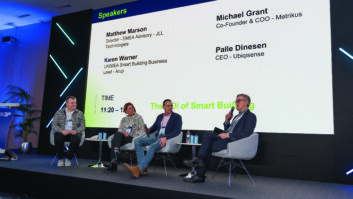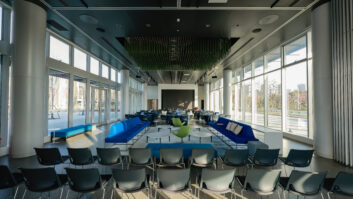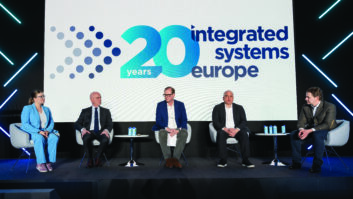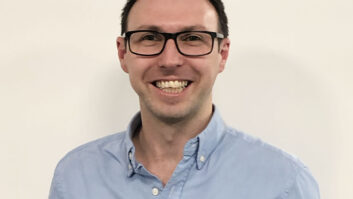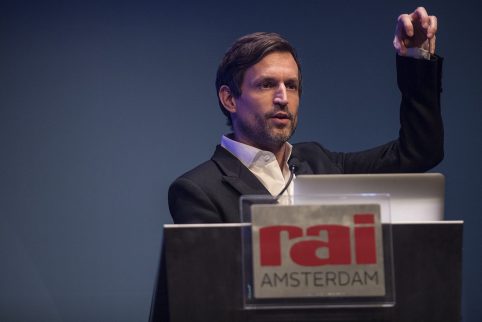
Internationally renowned and multi award-winning architect Ole Scheeren is one of those people who likes to think outside of the box. His eye-opening (and often jaw-dropping) buildings have not only transformed landscapes, but the lives of those who live and work in them, along with the wider community.
In a packed Opening Address, Scheeren used examples of his work to show how buildings and technology can be connected with humanity. This included the CCTV Headquarters in Beijing, China, the second largest building on the planet, which has a radical loop design.
“The shape suggests that we think of the building as a life form rather than a technical installation,” said Scheeren. The building includes social clusters – formal and informal spaces designed to bring people together.
Another project involved designing an office building for a series of small technology start-ups, that would encourage collaboration and communication. Scheeren’s solution was to create a ‘collaborative cloud’, an area where workers and visitors could “be in an informal work environment, where people could share a cloud of ideas and a cloud of knowledge”.
Technology is an important component of many buildings, but Scheeren said that “Smart buildings and smart cities are more than just about technology – it’s about socially inclusive environments. A building that saves you energy but is horrible
to live in, doesn’t matter.Ultimately, it’s about the quality of life – the most important measure of everything.”
The speed at which technology dates was touched upon on in a Q&A at the end of the presentation. “This is why architecture cannot derive its legitimacy from technology,” said Scheeren, “but if you don’t integrate things, they will feel divorced and separated, but if you integrate too much, you can become a victim of standards.
The solution is to create architecture that is robust enough to survive for as long as the physical matter stands. Social sustainability rather than technical sustainability.”
Scheeren was also asked how he thought artificial intelligence (AI) would impact on architecture, “We are not at the beginning of understanding that question,” he said, “[but] the importance of the quality of physical space is profoundly human and will never vanish. The more we live connected to the virtual world, the more we will acknowledge the need for the physical reality.”
